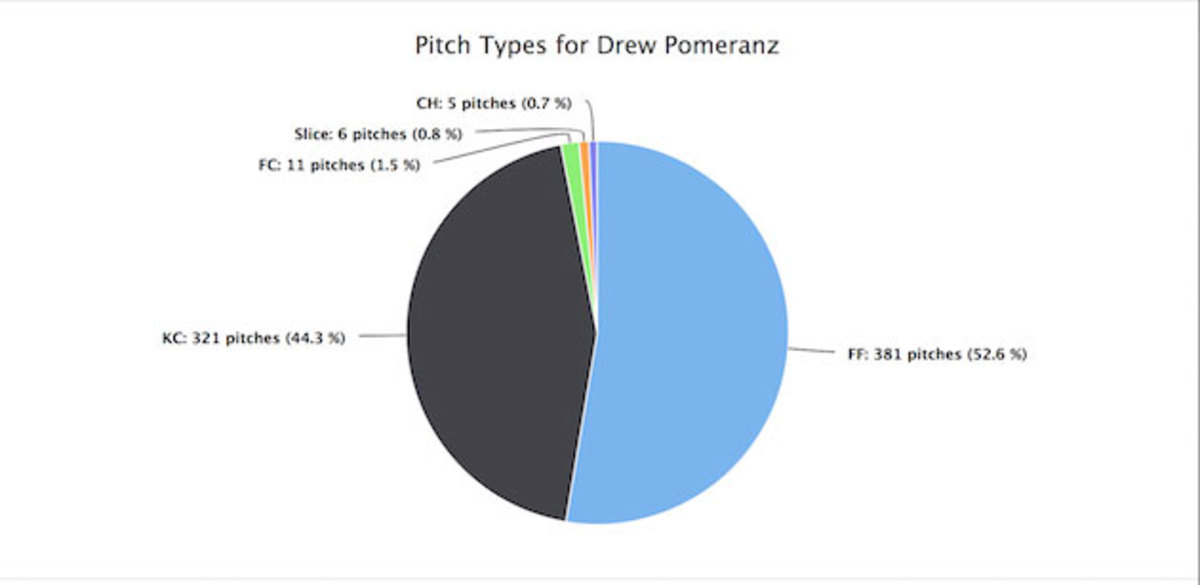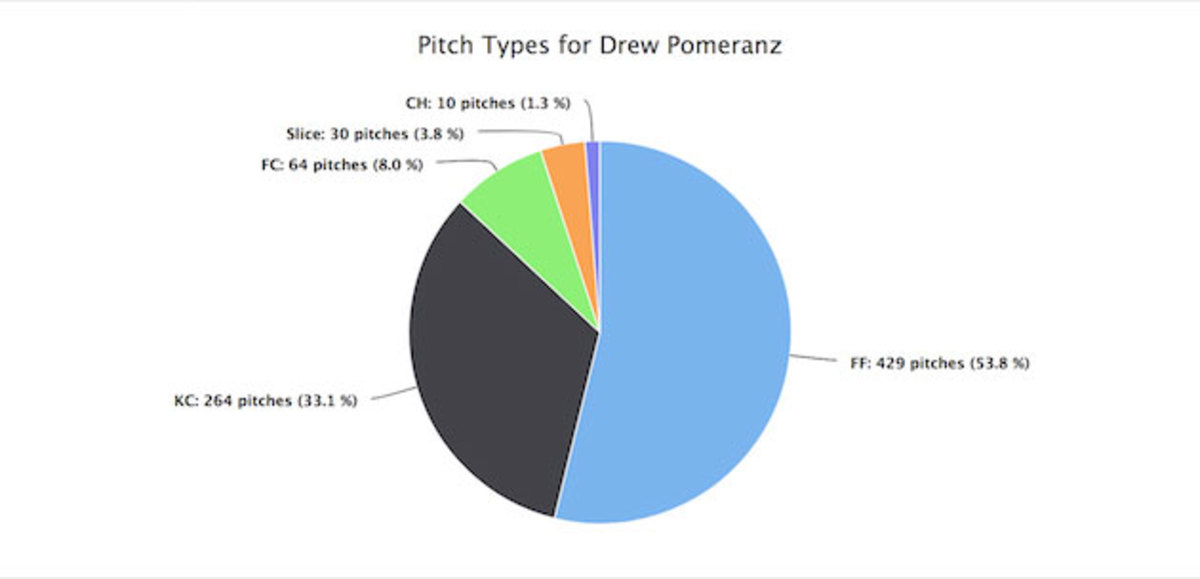Red Sox starter Drew Pomeranz's season is turning around thanks to his cutter

On June 16 in a start against the Astros, Red Sox starting pitcher Drew Pomeranz started the seventh inning with a 1–0 lead. It was his second time pitching into the seventh all year, though the first instance occurred just three starts previously. Evan Gattis, a threat to tie the game with one swing, led off the frame for the Astros. After getting ahead 1–2, Pomeranz reached back and broke off a cutter perfectly spotted on the outside corner. Gattis swung through it for strike three.
At first blush, this looks like nothing more than a run-of-the-mill strikeout by a pitcher who was dealing. Look deeper, however, and you’ll notice there is something special about this strikeout. It’s all about the cutter.
Back on May 20, Pomeranz failed to reach the fifth inning for his third consecutive outing. He allowed just one earned run in four innings in that start against the A’s, but he needed 97 pitches to get to that point, pitching around five hits and two walks. Pomeranz left the start with a 4.97 ERA and 1.47 ERA in 38 innings. The book on him wasn’t closed, but he wasn’t living up to his end of the bargain.
Aaron Judge, Giancarlo Stanton and everybody else: Handicapping the HR Derby field
Pomeranz’s next trip to the mound was his best of the season. Just five days after his ugly start against the A’s, he put up a six-inning, two-run, 11-strikeout gem in a win over the Rangers. Including that start, Pomeranz has been at the top of his game for six straight weeks, amassing a 2.54 ERA, 1.20 WHIP and 47 strikeouts in 46 innings, giving the Red Sox stability in the middle of their rotation.
The numbers and the eye test agree that Pomeranz has been a different pitcher over the last six weeks than he was during the first six of the season. What has been behind the change? Let’s take a look at his pitch usage rates for those two time periods, courtesy of Baseball Savant, to find out.
First six weeks:

Recent six weeks:

Over the last six weeks, Pomeranz has greatly increased his cutter usage. He barely threw it to start the season, using it just 1.5% of the time, which translated to 11 cutters in 724 pitchers. Beginning with the dominant outing against the Rangers, Pomeranz started throwing his cutter more often. Over his last eight starts, he has offered it 8% of the time, which comes out to 64 cutters in 797 pitches. That may not seem like a huge number, but giving hitters something else to think about, and catching them off-guard when they don’t think about it, is a huge advantage for any pitcher.
Mid-Year Report: Aaron Judge shines, Cubs flail in homer-happy first half of 2017 season
It helps, too, that Pomeranz’s cutters is quite good at inducing whiffs and weak contact. The pitch has a whiff rate of 14.7%, which is a monster number for any fastball. For sake of comparison, Max Scherzer’s four-seam fastball, arguably the best fastball in the game today, has a whiff rate of 12.7%. If you’re more into exact apples-to-apples comparisons, look no further than Jon Lester, who has long had one of the league’s best cutters. His whiff rate with the pitch this season is 12%, and he has been north of a 14.7% whiff rate with the cutter just twice in his career.
Here’s Pomeranz getting a swing and miss out of Brian Dozier with the cutter.
And here he is sending down Rougned Odor on strikes in the start against the Rangers that turned everything around. This was his 11th strikeout of the night.
Hitters have put 12 of Pomeranz’s cutters in play. Seven of those have been grounders, and three of the five hits he has allowed have been singles. Add a couple of popups to the mix, and Pomeranz has produced a whiff, a grounder or a popup on 26.7% of his total cutters this season. If you include only cutters at which hitters have swung in the sample, that number jumps to 64.5%.
Pomeranz is always going to use his four-seamer/curveball combo as the cornerstone of his repertoire. His cutter isn’t foundational like Lester’s, and his curveball is too good against both righties and lefties to not occupy a huge share of his pitch usage. Still, the cutter has been impressive as an out-pitch during his best stretch of the season, generating whiffs and weak contact at a gaudy rate. It’s safe to bet he won’t be abandoning it any time soon.
